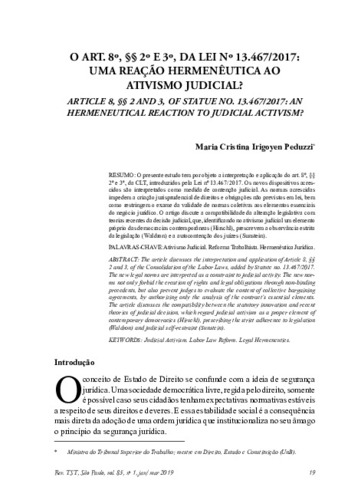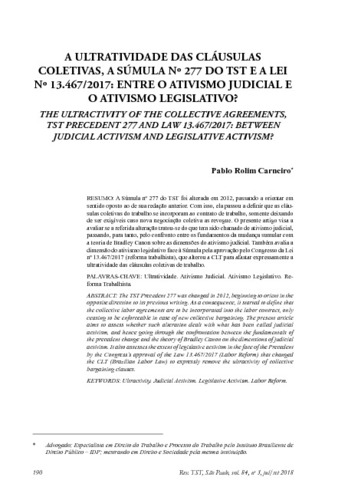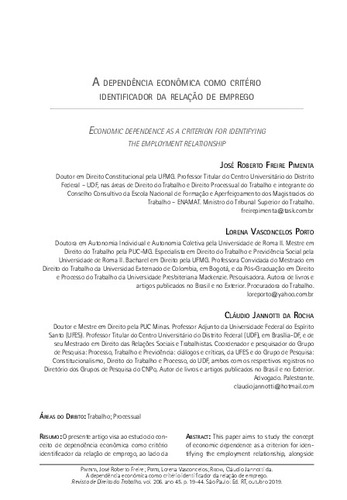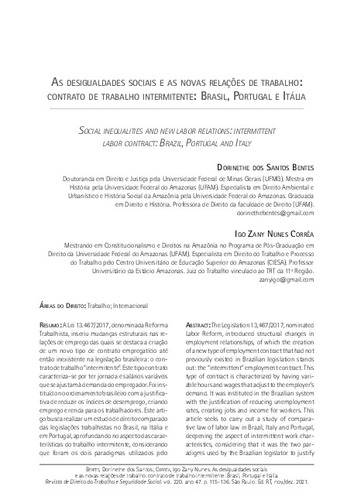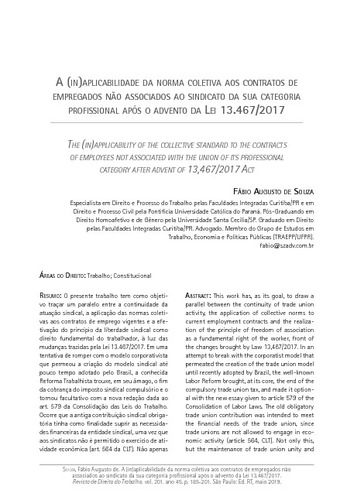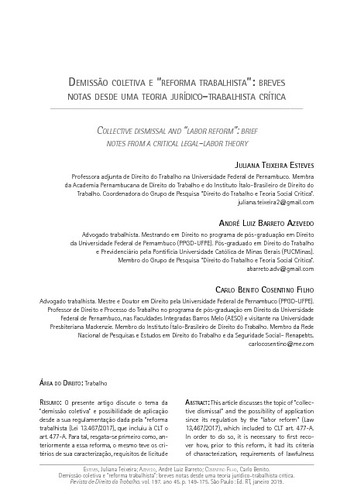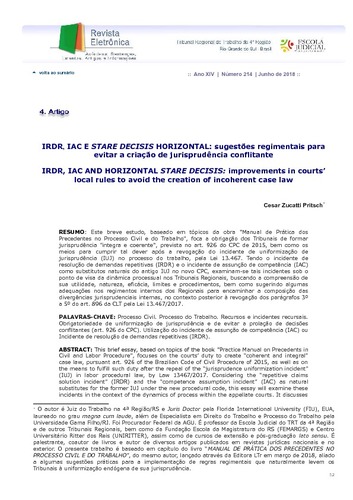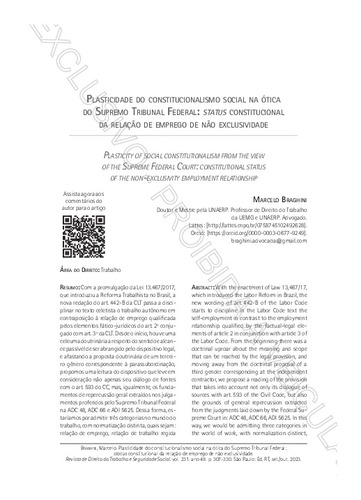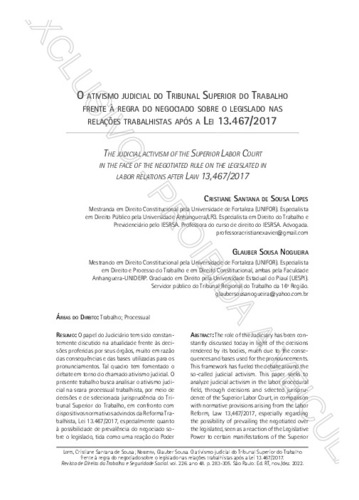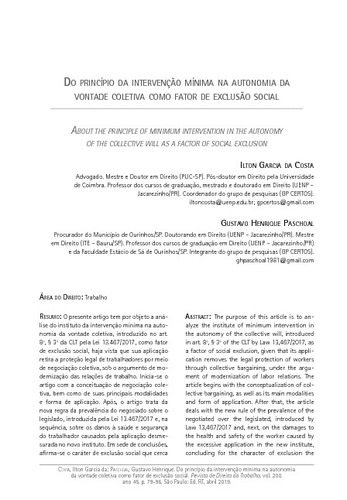Artigo de periódico
O art. 8º, §§ 2º e 3º, da Lei n. 13.467/2017: uma reação hermenêutica ao ativismo judicial?
| dc.contributor.author | Peduzzi, Maria Cristina Irigoyen | |
| dc.date.accessioned | 2019-06-19T11:08:26Z | |
| dc.date.available | 2019-06-19T11:08:26Z | |
| dc.date.issued | 2019-03 | |
| dc.identifier.citation | PEDUZZI, Maria Cristina Irigoyen. O art. 8º, §§ 2º e 3º, da Lei n. 13.467/2017: uma reação hermenêutica ao ativismo judicial? = Article 8, §§ 2º and 3, of Statue No. 13.467/2017: an hermeneutical reaction to judicial activism? Revista do Tribunal Superior do Trabalho, São Paulo, v. 85, n. 1, p. 19-33, jan./mar. 2019. | pt_BR |
| dc.identifier.uri | https://hdl.handle.net/20.500.12178/157116 | |
| dc.description | Informação sobre a autora: Ministra, Tribunal Superior do Trabalho | pt_BR |
| dc.description.abstract | [por] Tem por objeto a interpretação e aplicação do art. 8º, §§ 2º e 3º, da CLT, introduzidos pela Lei n. 13.467/2017. Os novos dispositivos acrescidos são interpretados como medida de contenção judicial. As normas acrescidas impedem a criação jurisprudencial de direitos e obrigações não previstos em lei, bem como restringem o exame da validade de normas coletivas aos elementos essenciais do negócio jurídico. O artigo discute a compatibilidade da alteração legislativa com teorias recentes da decisão judicial, que, identificando no ativismo judicial um elemento próprio das democracias contemporâneas (Hirschl), prescrevem a observância estrita da legislação (Waldron) e a autocontenção dos juízes (Sunstein). | pt_BR |
| dc.description.abstract | [eng] The article discusses the interpretation and application of Article 8, §§ 2º and 3, of the Consolidation of the Labor Laws, added by Statute no. 13.467/2017. The new legal norms are interpreted as a constraint to judicial activity. The new norms not only forbid the creation of rights and legal obligations through non-binding precedents, but also prevent judges to evaluate the content of collective bargaining agreements, by authorizing only the analysis of the contract’s essential elements. The article discusses the compatibility between the statutory innovation and recent theories of judicial decision, which regard judicial activism as a proper element of contemporary democracies (Hirschl), prescribing the strict adherence to legislation (Waldron) and judicial self-restraint (Sunstein). | pt_BR |
| dc.description.tableofcontents | Limitações institucionais e hermenêuticas estabelecidas pela Lei n. 13.467/2017 -- Segurança jurídica e ativismo judicial: a premissa voluntarista -- Olhares institucionais sobre o ativismo judicial -- O novo art. 8º da CLT: contextualização a partir das novas teorias sobre o ativismo judicial | pt_BR |
| dc.language.iso | pt_BR | pt_BR |
| dc.relation | Brasil. Lei n. 13.467, de 13 de julho de 2017 | pt_BR |
| dc.relation.ispartof | Revista do Tribunal Superior do Trabalho: vol. 85, n. 1 (jan./mar. 2019) | pt_BR |
| dc.relation.uri | https://www.lexml.gov.br/urn/urn:lex:br:federal:lei:2017-07-13;13467 | pt_BR |
| dc.subject | Reforma trabalhista, Brasil | pt_BR |
| dc.subject | Ativismo judicial, Brasil | pt_BR |
| dc.subject | Hermenêutica, Brasil | pt_BR |
| dc.subject | Legislação trabalhista, alteração, Brasil | pt_BR |
| dc.title | O art. 8º, §§ 2º e 3º, da Lei n. 13.467/2017: uma reação hermenêutica ao ativismo judicial? | pt_BR |
| dc.title.alternative | Article 8, §§ 2º and 3, of Statue No. 13.467/2017: an hermeneutical reaction to judicial activism? | pt_BR |
| dc.type.genre | Artigo de periódico | pt_BR |
| dc.identifier.rvbisys | 001148540 | |
| dc.relation.ispartoflink | https://hdl.handle.net/20.500.12178/156990 | pt_BR |


